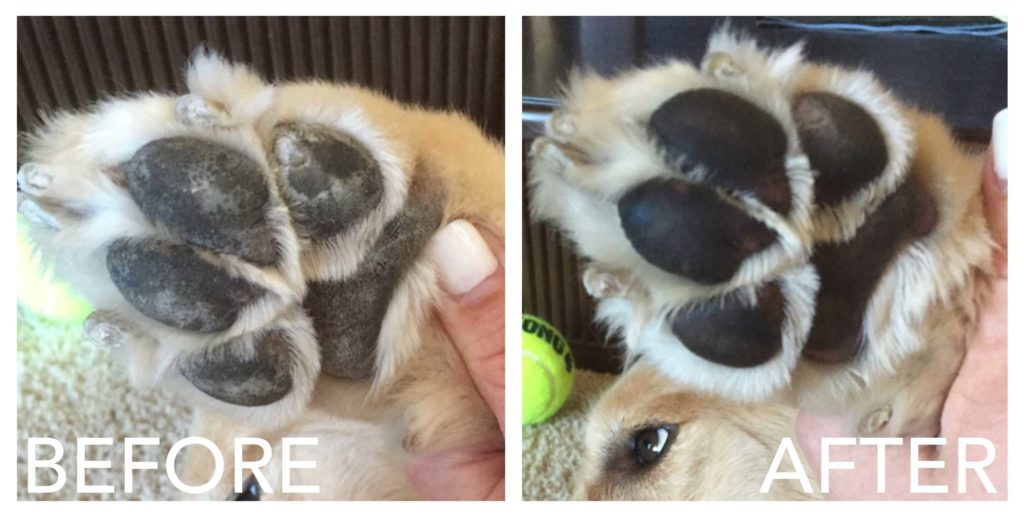When the fall season gives way to winter, we eagerly bust out our winter jackets, hats, gloves and sweaters to stay warm. We avoid going outside for extended periods of time, especially in freezing temperatures, and we bunker down in our homes. Although the weather change might be hard to get used to, these shifts in weather are felt more acutely by our dogs who can take longer to acclimate to outdoor changes.
Cold Tolerance for Different Breeds
Some Northern breeds like the Akita, Husky, Alaskan Malamute and Keeshond are built to withstand the arctic chill; their dense coats and furry feet act as insulation and help them navigate icy terrain. Others, like the Chihuahua, Poodle and Dachshund have thin coats and less muscle mass.
For smaller breed dogs, their anatomy keeps them closer to the ground where they come into direct contact with ice, snow and de-icing salt. These breeds are especially sensitive to exposure, and if their human owners are feeling chilled, you can bet they are too.
Tips for Dog Safety in Cold Weather
While we can turn up the heat, throw on some extra layers and break out our waterproof boots, our dogs need our help to keep safe in cold weather.
Add Extra Layers
One way to ensure our canine friends maintain a normal 101.5-degree Fahrenheit body temperature is to add an extra layer of fluff or insulation. Thin-skinned, delicate breeds such as the Italian Greyhound can use a coat or sweater that protects the belly and torso. Excessive hair between a dog’s toes can be trimmed to avoid slipping on surfaces and to limit the snowballs that form in between the toes. A well-groomed pooch can also be outfitted with booties for insulation and to provide traction on slippery surfaces. Most dog booties are elastic or have Velcro fasteners and can be laundered. Wiping down bellies and feet after coming in from the outdoors goes a long way in maintaining optimal health.
Limit Outdoor Playtime
Acclimating our dogs to the colder temperatures is best done by limiting outdoor playtime to 5-10 minutes and extending that period gradually.
Signs a dog is too cold:
- Depression
- Heat-seeking behavior
- Shivering
As their internal temperature drops and they become hypothermic, it’s possible for a decreased heart rate, coma and even death to ensue. Dogs are more susceptible to frostbite on delicate skin such as the ear tips and tail. The most noticeable change in affected areas is a color change from pink to white or blue-grey.
Extra Care for Young and Senior Pets
Caring for senior or young pets when the weather is cold may mean keeping them indoors or providing a warm, cozy shelter. These dogs are less able to regulate body temperature, might be lower to the ground resulting in belly exposure to the snow or have compromised immune systems leaving them to feel physiologically stressed.
Temperature Safety Rules
As a rule, most dogs are comfortable at temperatures above 45 degrees and don’t likely need a coat. Below 32 degrees, most dogs will be feeling an uncomfortable chill. As the thermometer dips under 20 degrees (be sure to consider wind too), cover your pet when outside unless they happen to be an Arctic breed.
Maintain a Healthy Nutrition
Lastly, nutrition and hydration should be carefully considered when the weather is cold. Keeping your home’s humidity level high can help pets feel warmer and decrease the risk of cracked pads and dry skin. Dehydration is a concern in wintertime just as it is in the summer. Some dogs may drink more water to offset the lack of humidity in the air. Always provide ample fresh water to their bowls throughout the day. You can even give them ice cubes to snack on and opt for a heated water bowl if necessary.
If your dog is active in the snow or spends a lot of time outdoors, they utilize more calories to maintain their body temperature. To care for your dog in the winter, you might find additional kibble is necessary to maintain body weight and optimal health.
Paw Balm Recipe
Paw balm works as a preventive treatment or to help soften dry paw pads and noses during the winter.

What You Need:
- 21-24 standard lip balm tubes OR 6 1-oz. tins
- A small digital kitchen scale, optional
- Small pot or double boiler
Ingredients:
- 2 oz. (approx. 2 tbsp.) olive, sunflower, or sweet almond oil
- 2 oz. (approx. 2 tbsp.) coconut oil
- 1 oz. (approx. 1 tbsp.) shea butter
- 4 tsp. beeswax
Instructions:
- In a small pot or double boiler over low heat, melt the oils, shea butter and beeswax. Stir continuously until all is melted and well blended.
- Carefully pour the mixture into lip balm tubes and/or tins.
- Let them cool on the counter until they’ve hardened.
- Cap and label.
- Keep away from extreme heat.
- Apply the balm as a preventive treatment or to help soften dry paw pads or noses.
At Pet Butler, we want your dog to enjoy the outdoors while remaining safe and healthy. You can focus on quality outside time with your pup, and we’ll take care of their waste removal on a weekly, every other week or monthly basis.

